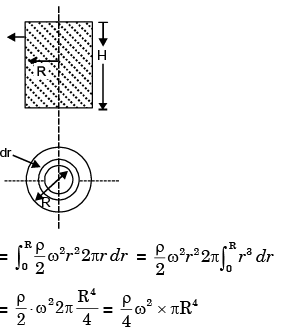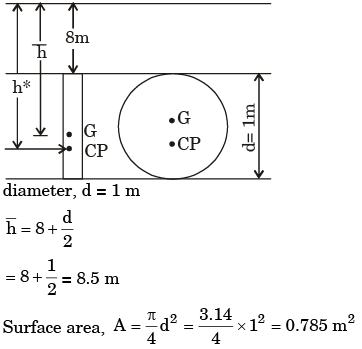Past Year Questions: Fluid Statics - Mechanical Engineering MCQ
20 Questions MCQ Test - Past Year Questions: Fluid Statics
For the stability of a floating body the
[2017 : Set-2]
Consider a frictionless, massless and leak-proof plug blocking a rectangular hole of dimensions 2R × L at the bottom of an open tank as shown in the figure. The head of the plug has the shape of a semi-cylinder of radius R. The tank is filled with a liquid of density ρ up to the tip of the plug.
The gravitational acceleration is g. Neglect the effect of the atmospheric pressure.
[2016 : Set-1]
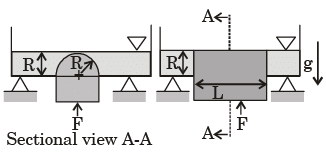
The force F required to hold the plug in its position is
The gravitational acceleration is g. Neglect the effect of the atmospheric pressure.

| 1 Crore+ students have signed up on EduRev. Have you? Download the App |
For a floating body, buoyant force acts at the
[2016 : Set-1]
The large vessel shown in the figure contains oil and water. A body is submerged at the interface of oil and water such that 45 percent of its volume is in oil while the rest is in water.
The density of the body is _______ kg/m3.
The specific gravity of oil is 0.7 and density of water is 1000 kg/m3.
Acceleration due to gravity: g = 10 m/s2.
[2016 : Set-2]
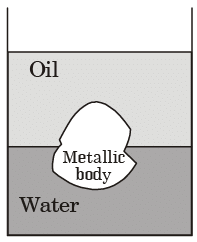
For a completely submerged body with centre of gravity G and centre of buoyancy B, the condition of stability will be
[2014 : Set-1]
A hinged gate of length 5 m, inclined at 30° with the horizontal and with water mass on its left, is shown in figure below. Density of water is 1000 kg/m3. The minimum mass of the gate in kg per unit width (perpendicular to the plane of paper), required to keep it closed
[2013]

A large tank with a nozzle attached contains three immiscible, inviscid fluids as shown. Assuming that the changes in h1, h2 and h3 are negligible, the instantaneous discharge velocity is
[2012]
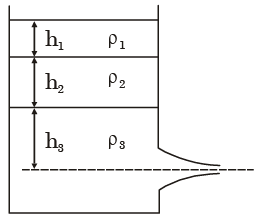
For the stability of a floating body, under the influence of gravity alone, which of the following is TRUE?
[2010]
Oil in a hydraulic cylinder is compressed from an initial volume 2m3 to 1.96 m3. If the pressure of oil in the cylinder changes from 40 MPa to 80 MPa during compression, the bulk modulus of elasticity of oil is
[2007]
The pressure gauges G1 and G2 installed on the system show pressure of ρG1 = 5.00 bar and ρG2 = 1.00 bar. The value of unknown pressure P is [Atmospheric pressure = 1.01 bar]
[2004]
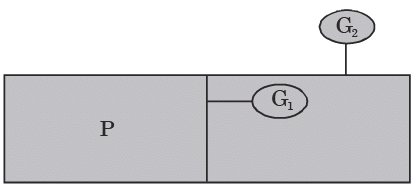
A closed cylinder having a radius R and height H is filled with oil of density ρ. If the cylinder is rotated about its axis at an angular velocity of ω, the thrust at the bottom of the cylinder is
[2004]
A cylindrical body of cross-sectional area A, height H and density ρs, is immersed to a depth h in a liquid of density ρ, and tied to the bottom with a string. The tension in the string is ____.
[2003]
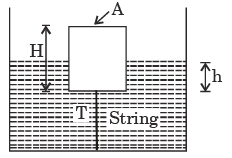
The horizontal and vertical hydrostatic forces Fx and Fy on the semicircular gate, having a width w into the plane of figure, are
[2001]
In given figure, if the pressure of gas in bulb A is 50 cm Hg vacuum and patm = 76 cm Hg, then height of column H is equal to
[2000]
Refer to figure, the absolute pressure of gas A in the bulb is
[1997]
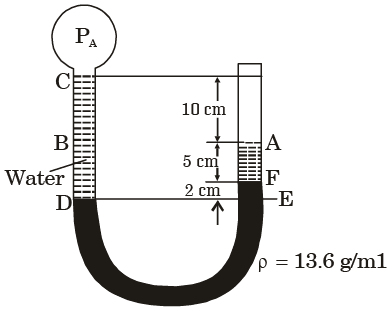
A mercury manometer is used to measure the static pressure at a point in a water pipe as shown in figure. The level difference of mercury in the two limbs is 10 mm. The gauge pressure at that point is
[1996]
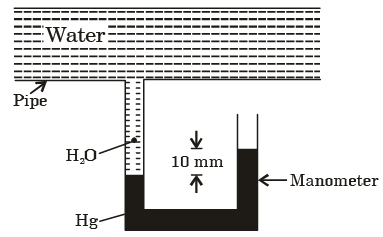
The force F needed to support the liquid of density ρ and the vessel on top (fig.) is
[1995]
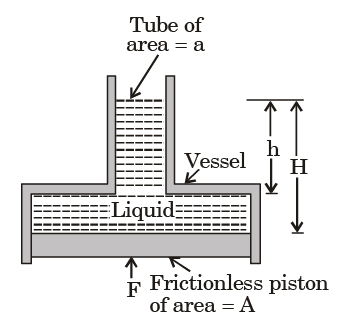
The cross-sectional area of one limb of a U-tube manometer (figure shown below) is made 500 times larger than the other, so that the pressure difference between the two limbs can be determined by measuring h on one limb of the manometer. The percentage error involved is
[1990]
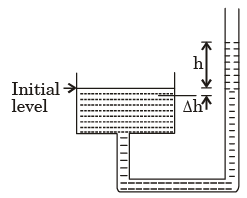
A circular plate 1 m in diameter is submerged vertically in water such its upper edge is 8 m below the free surface of water. The total hydrostatic pressure force on one side of plate is
[1988]


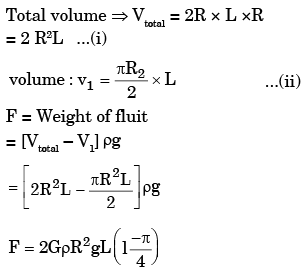
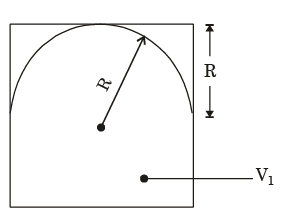
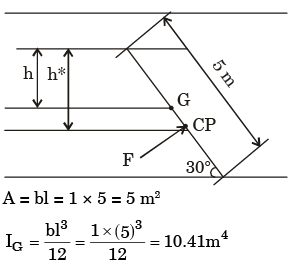
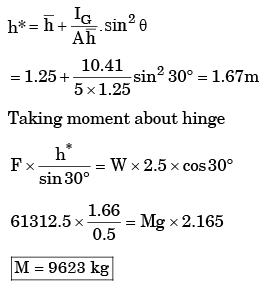




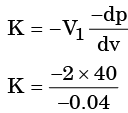
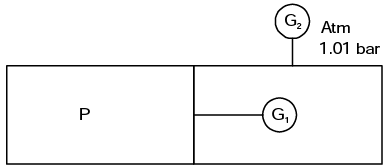

 [∵ v = ω × r]
[∵ v = ω × r]

